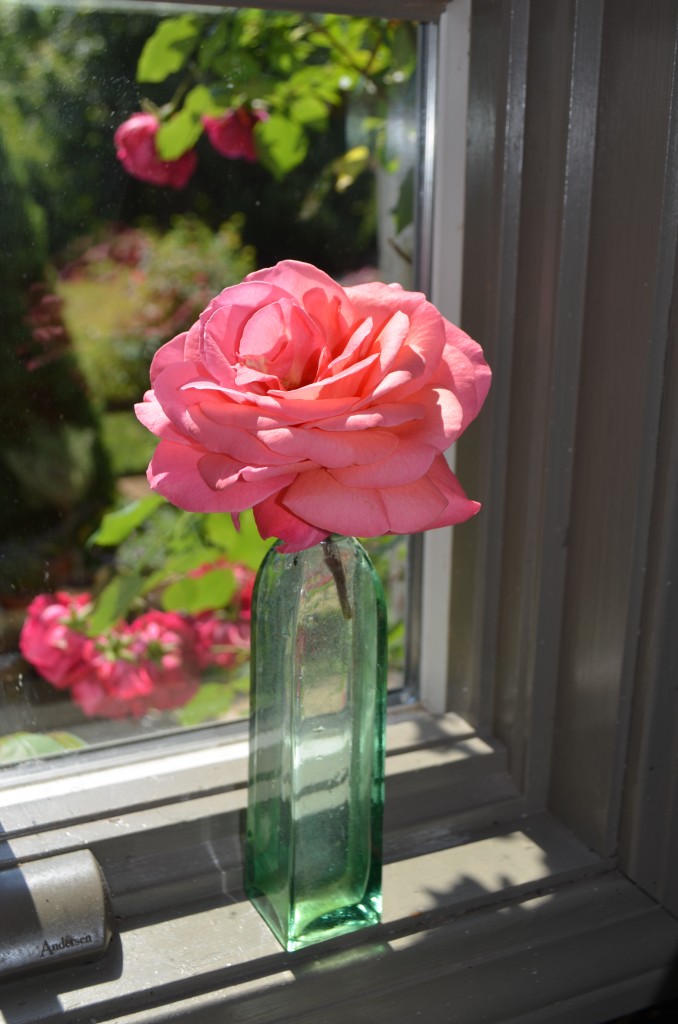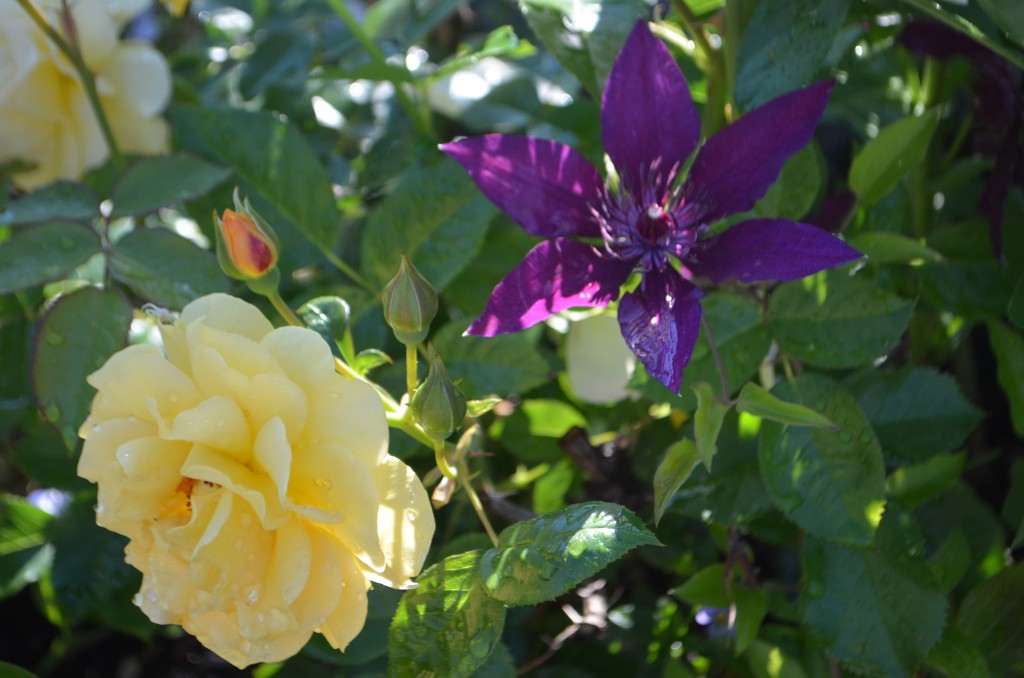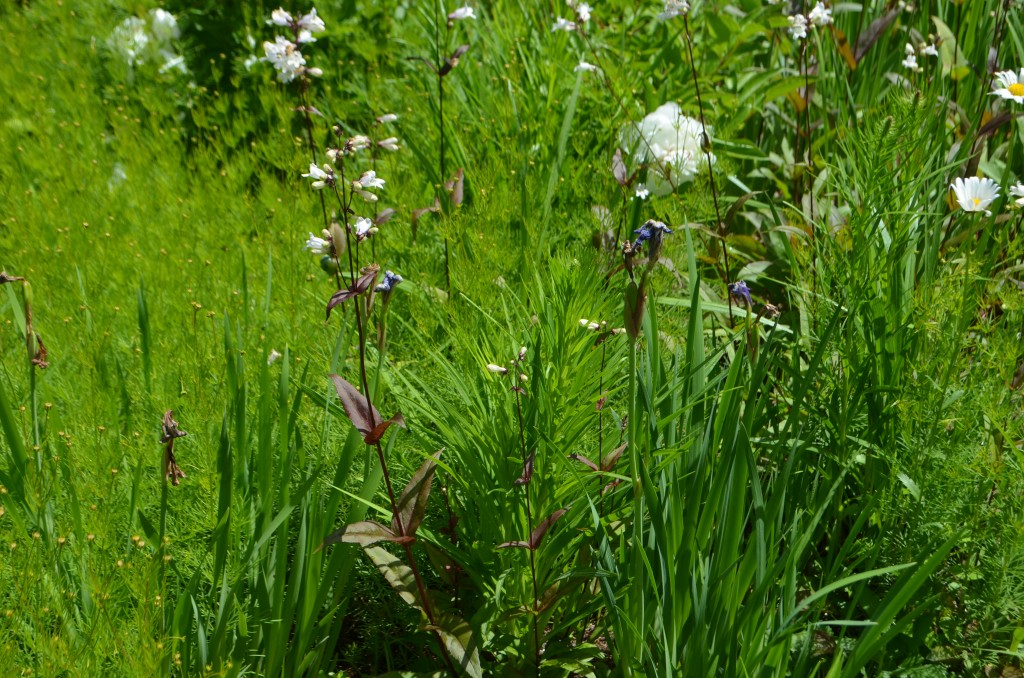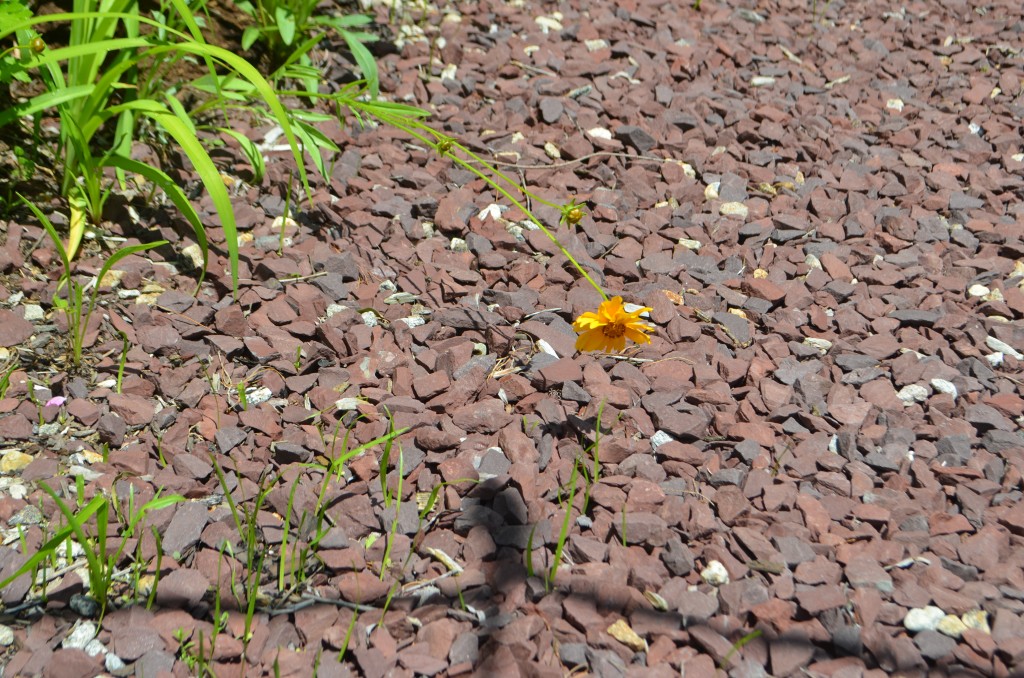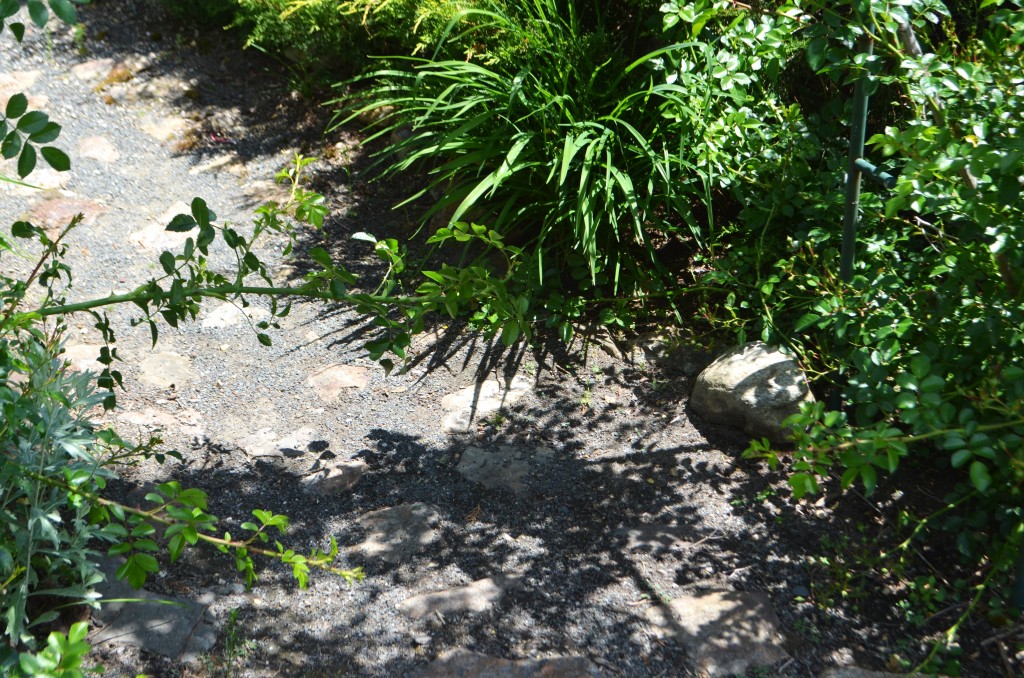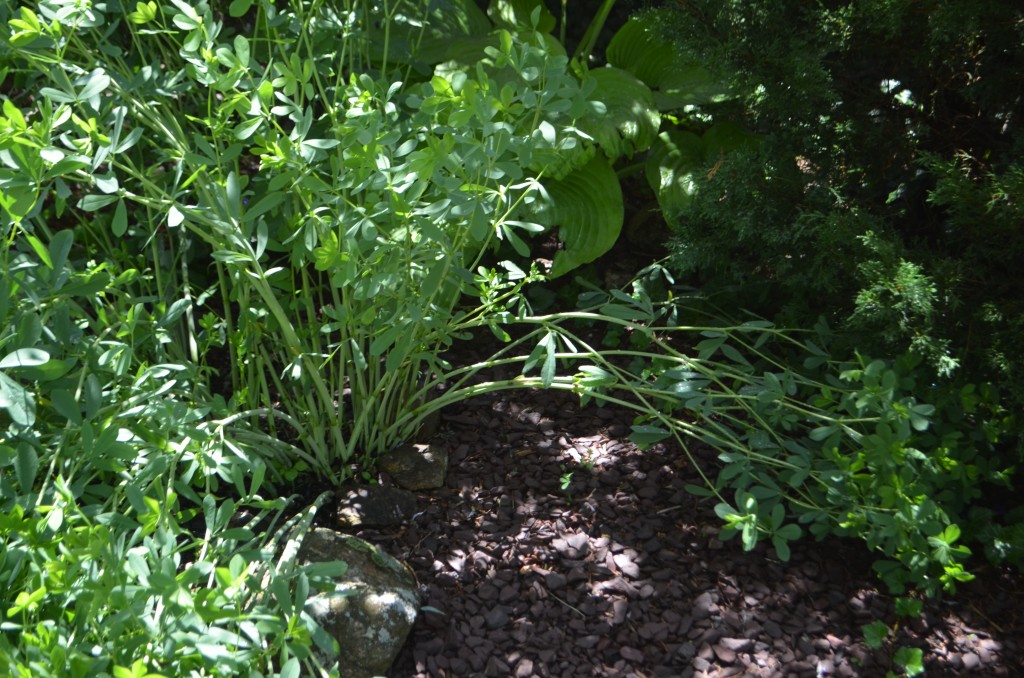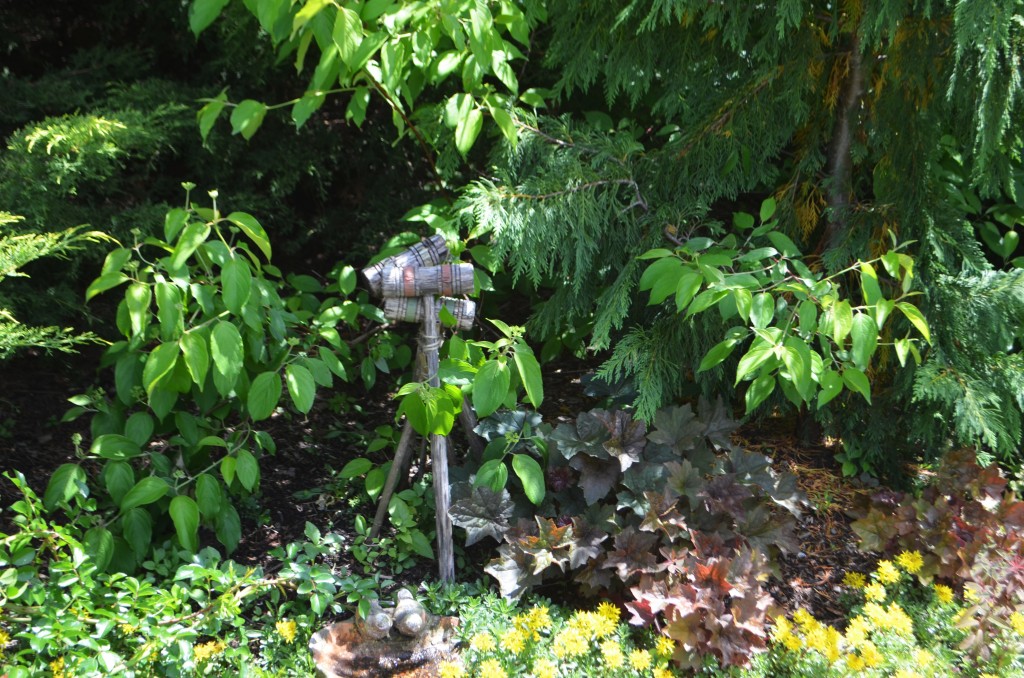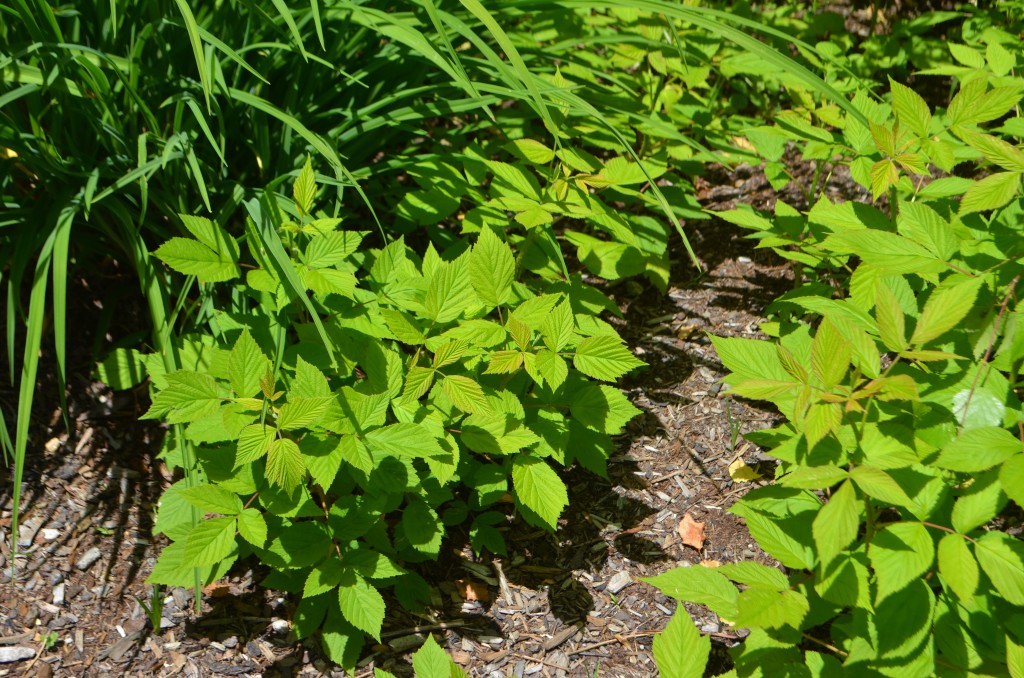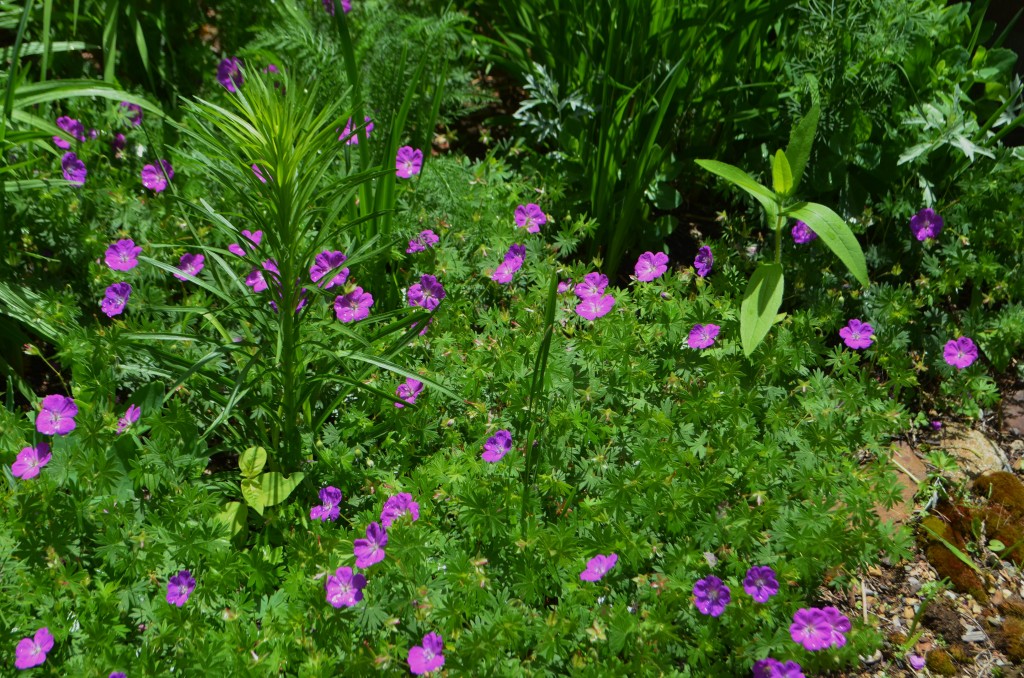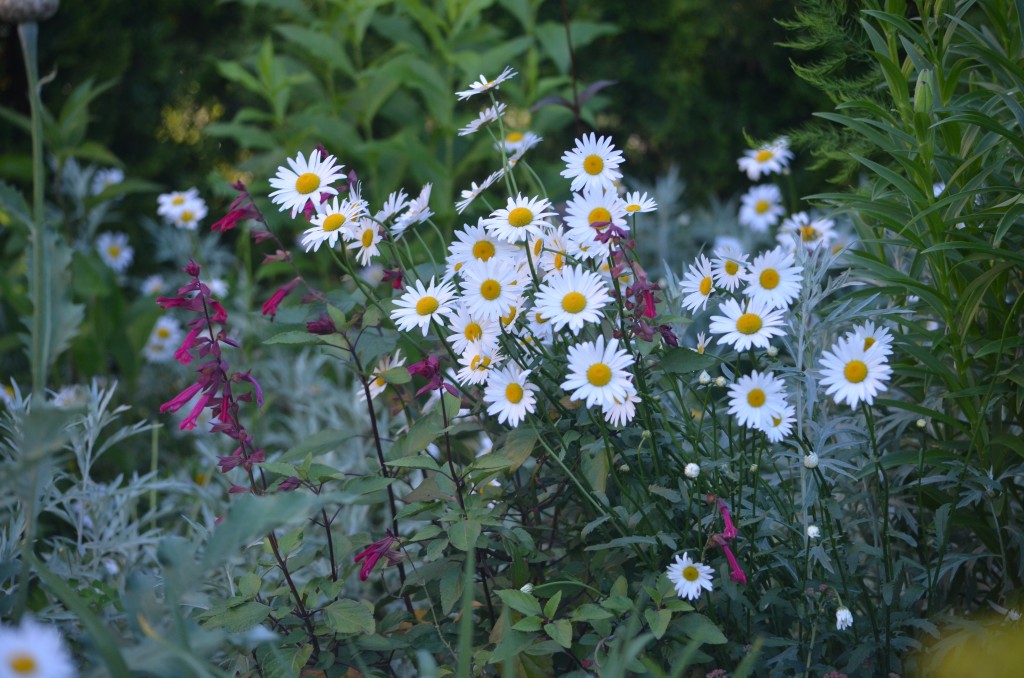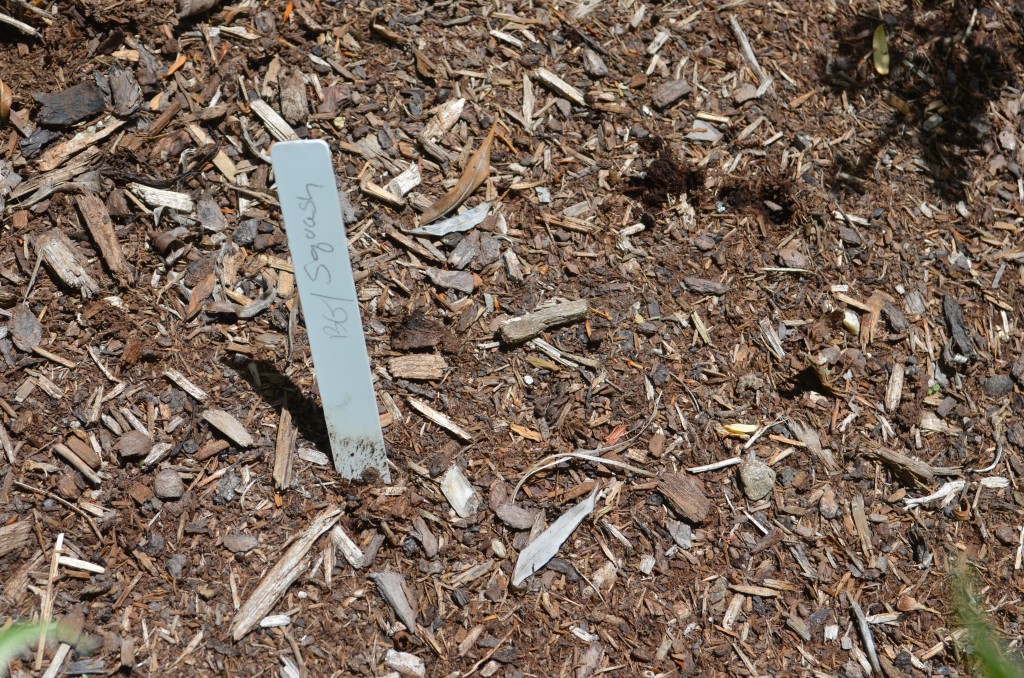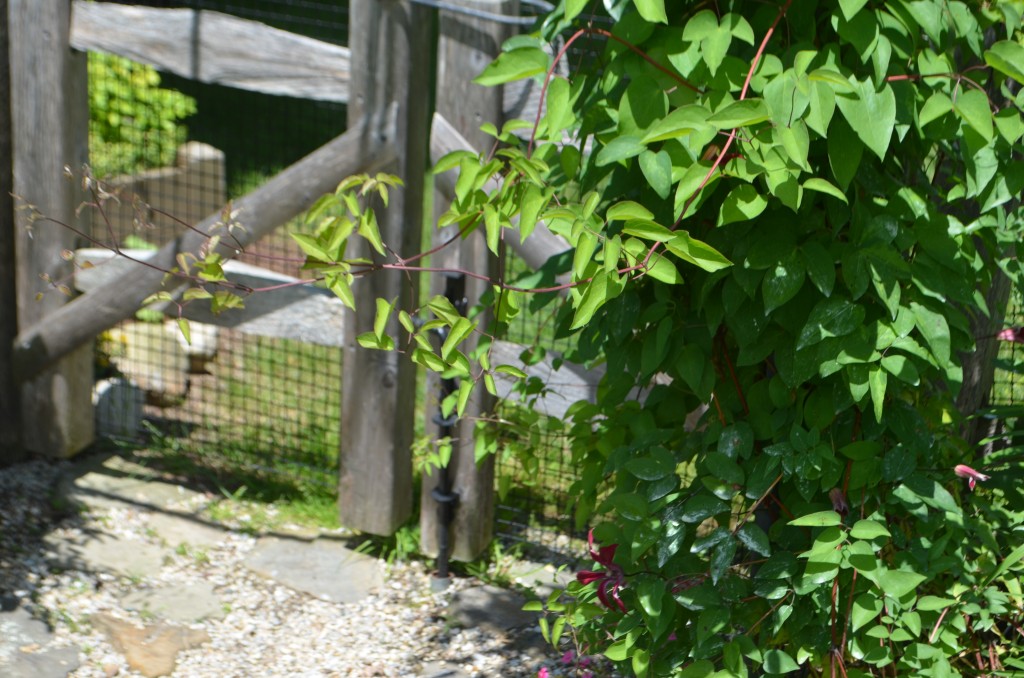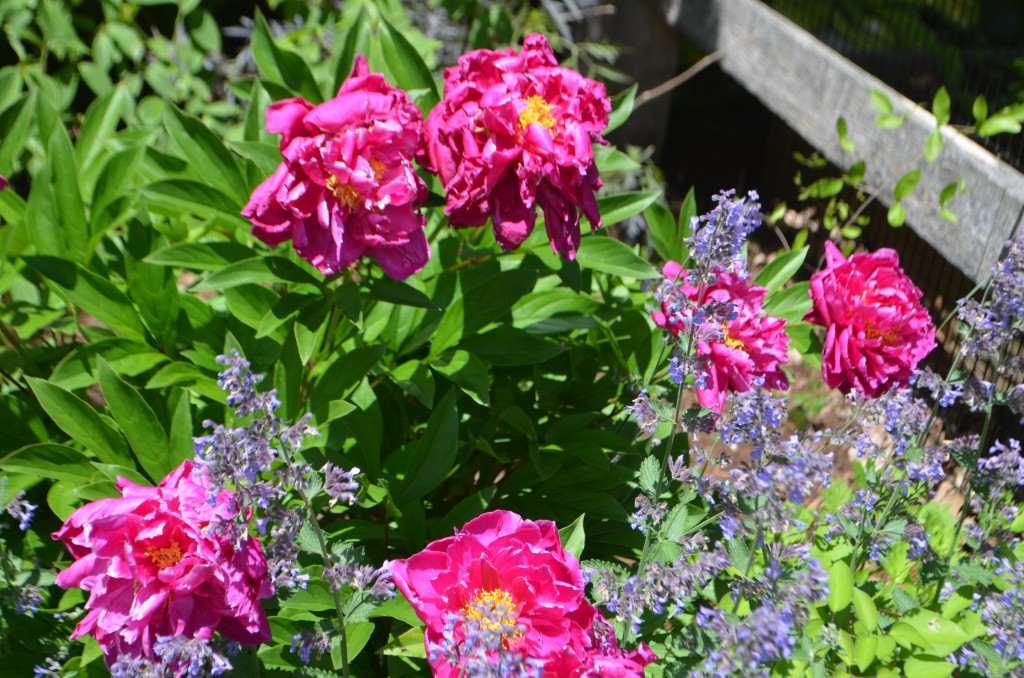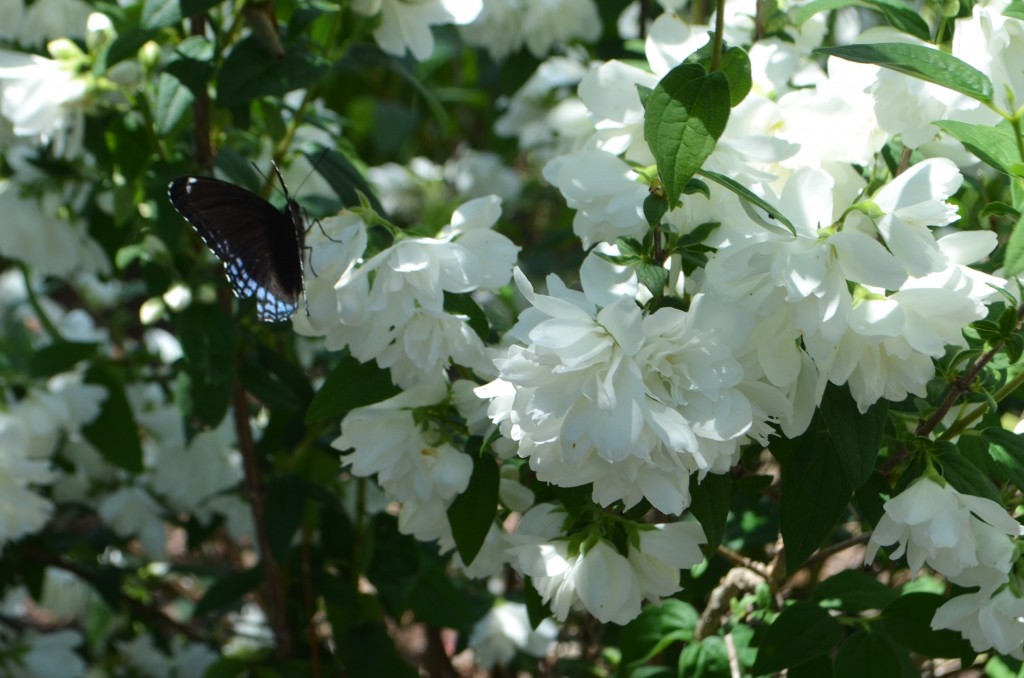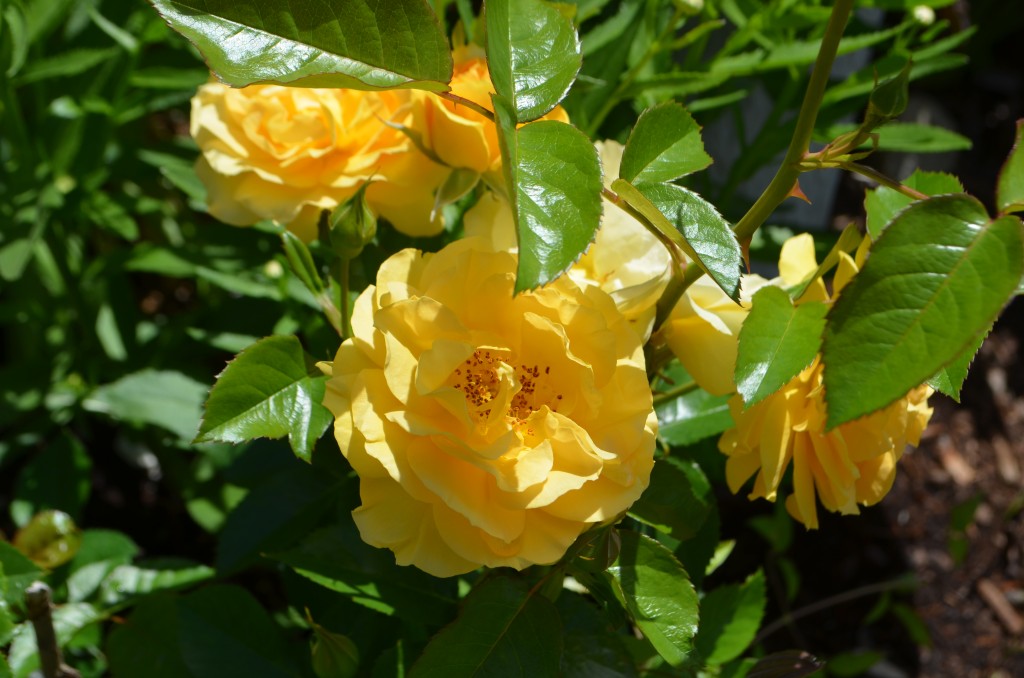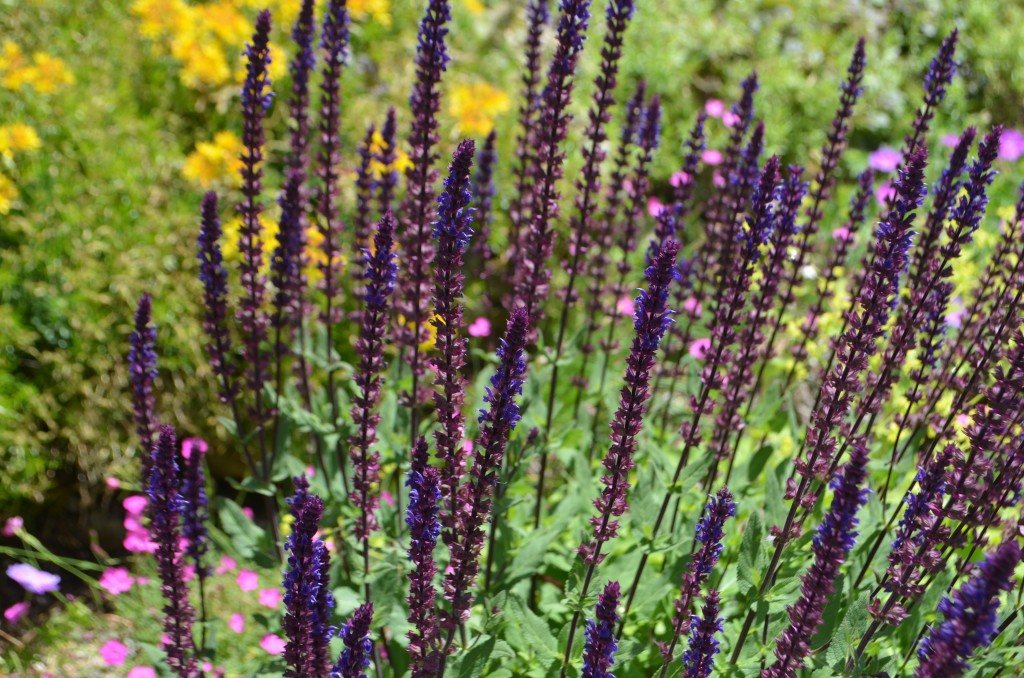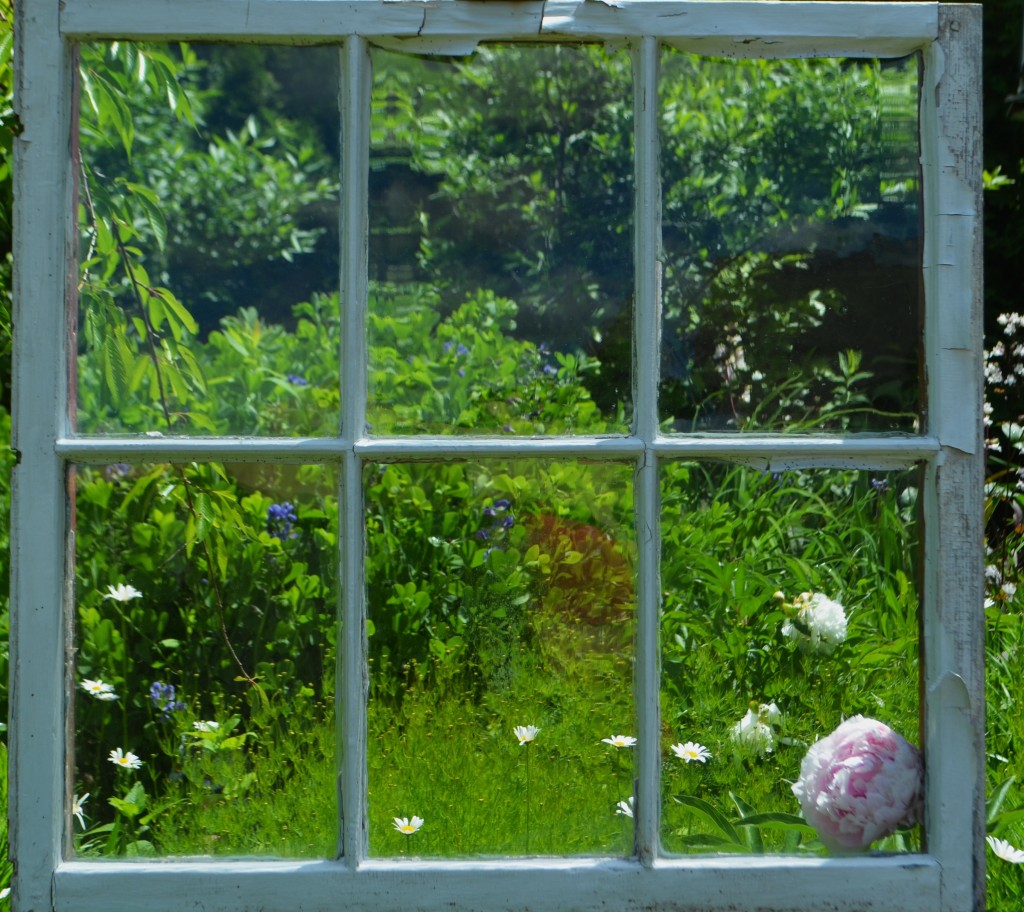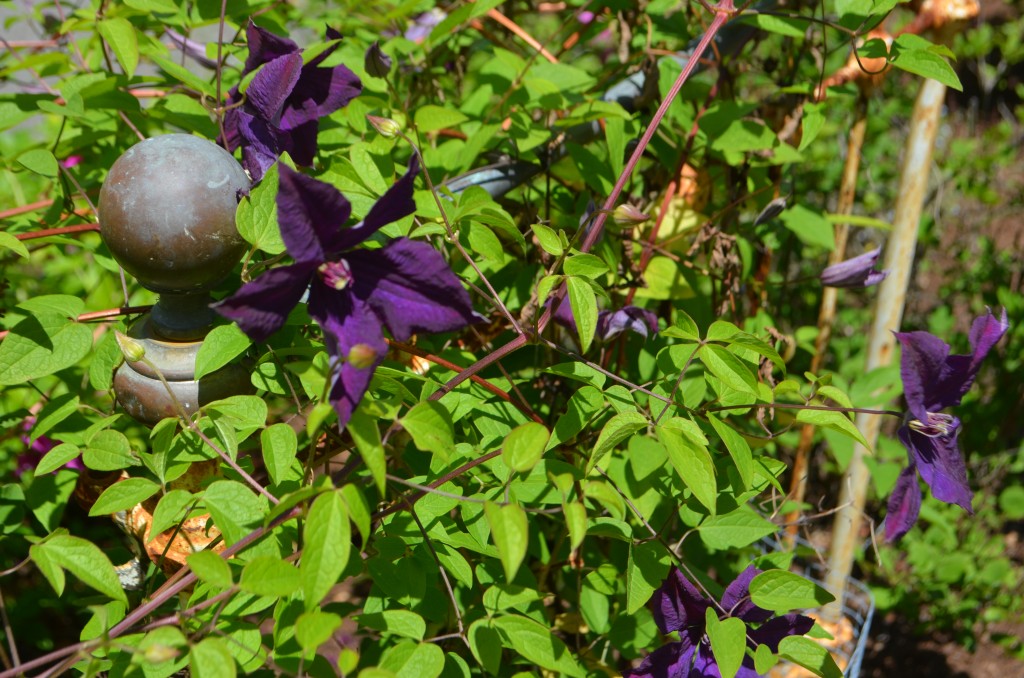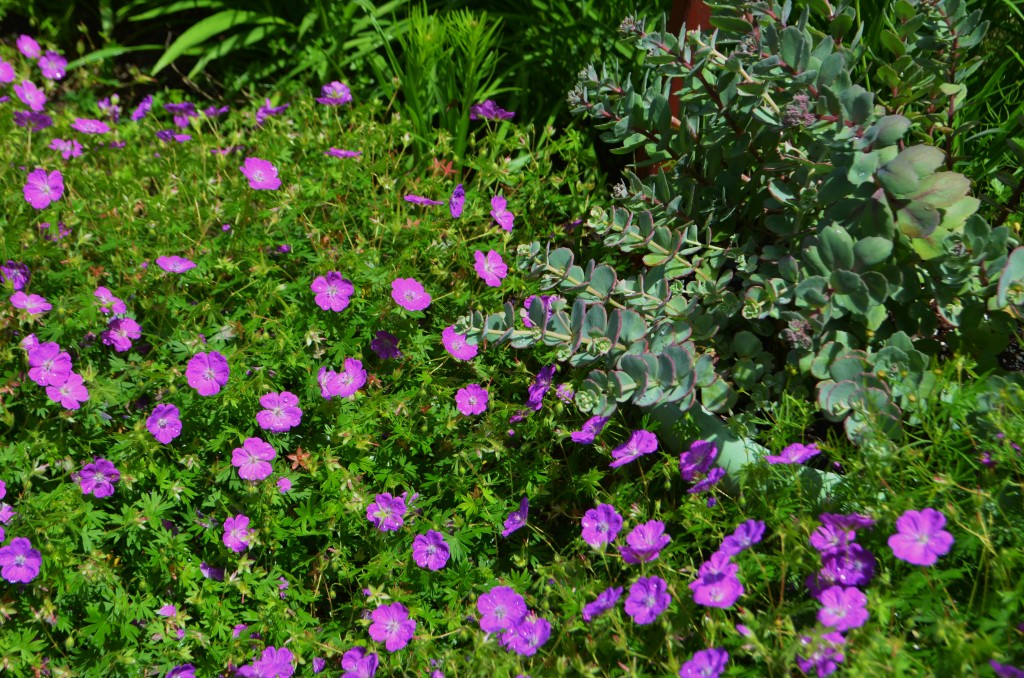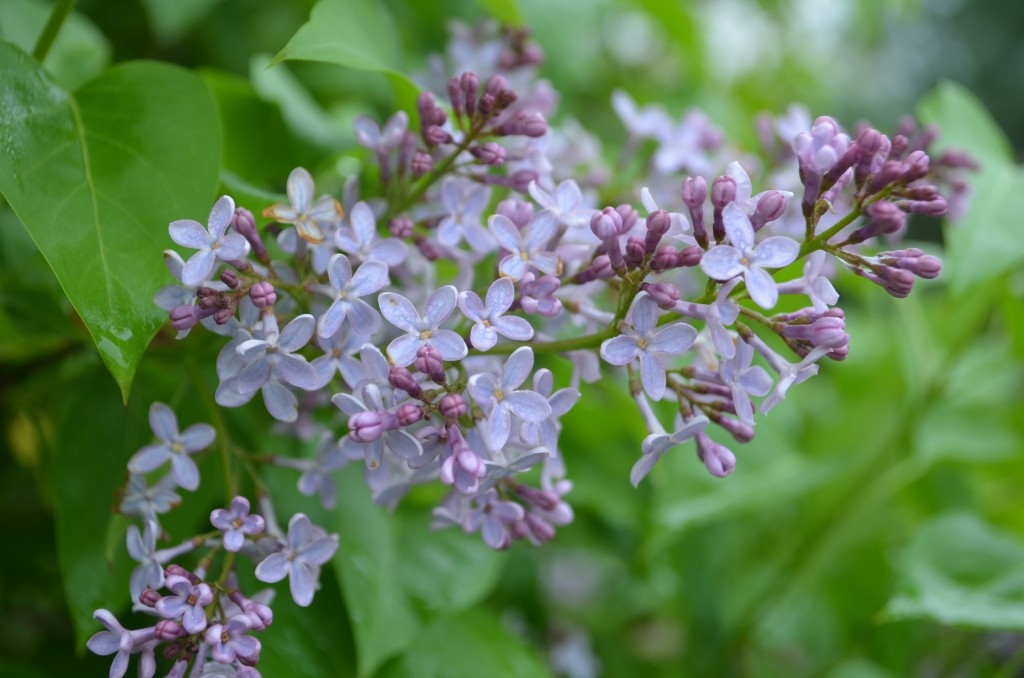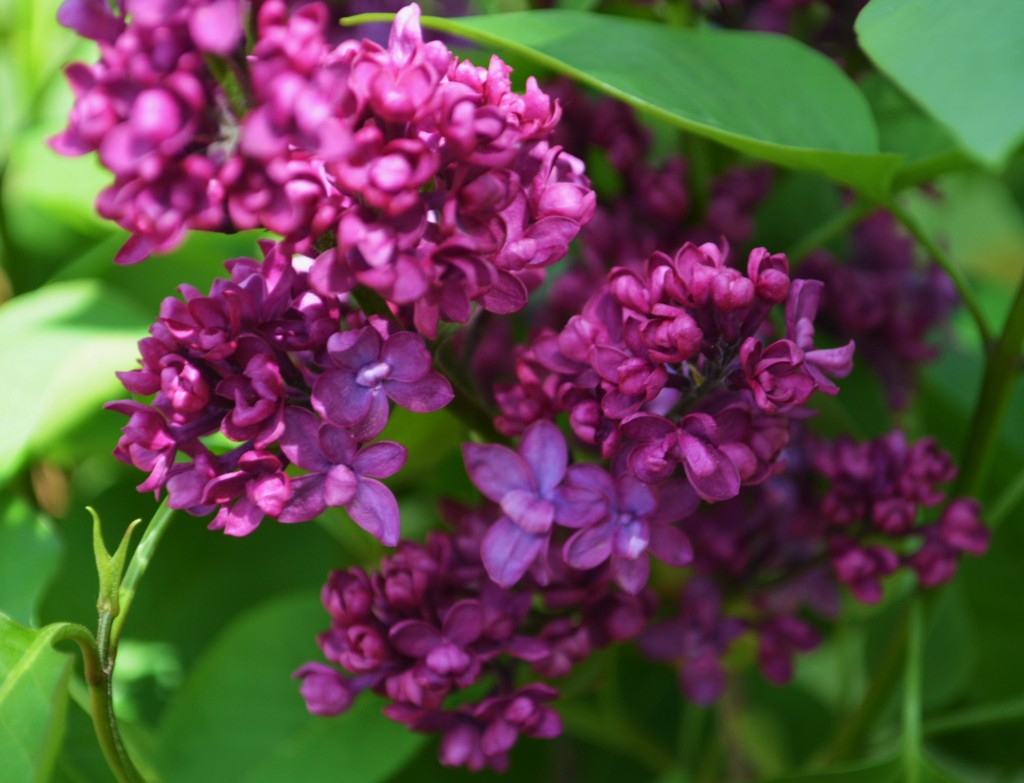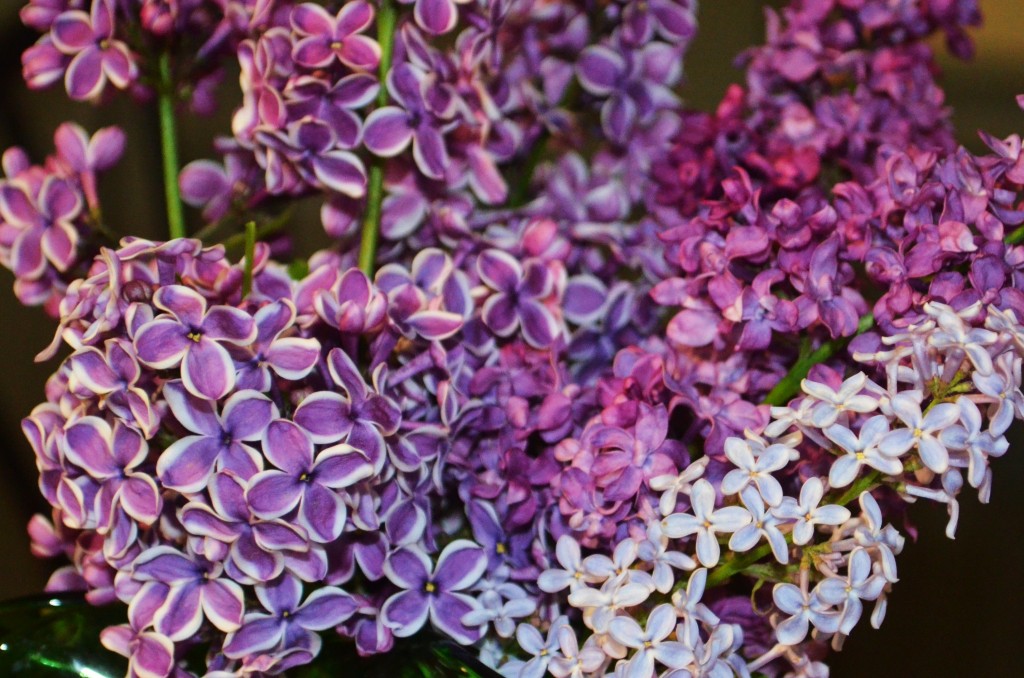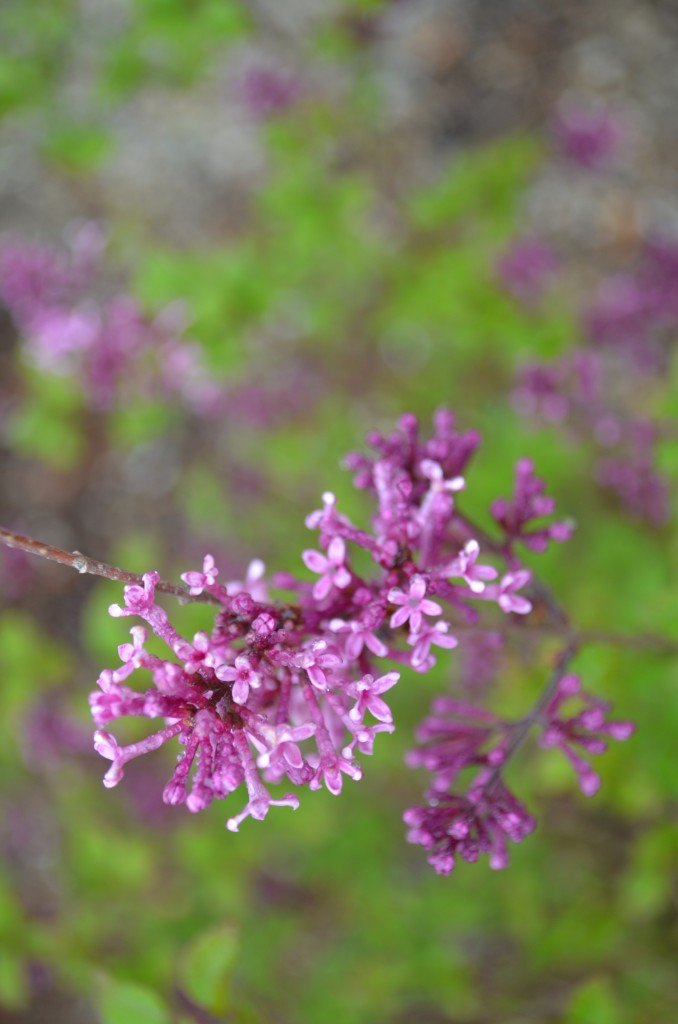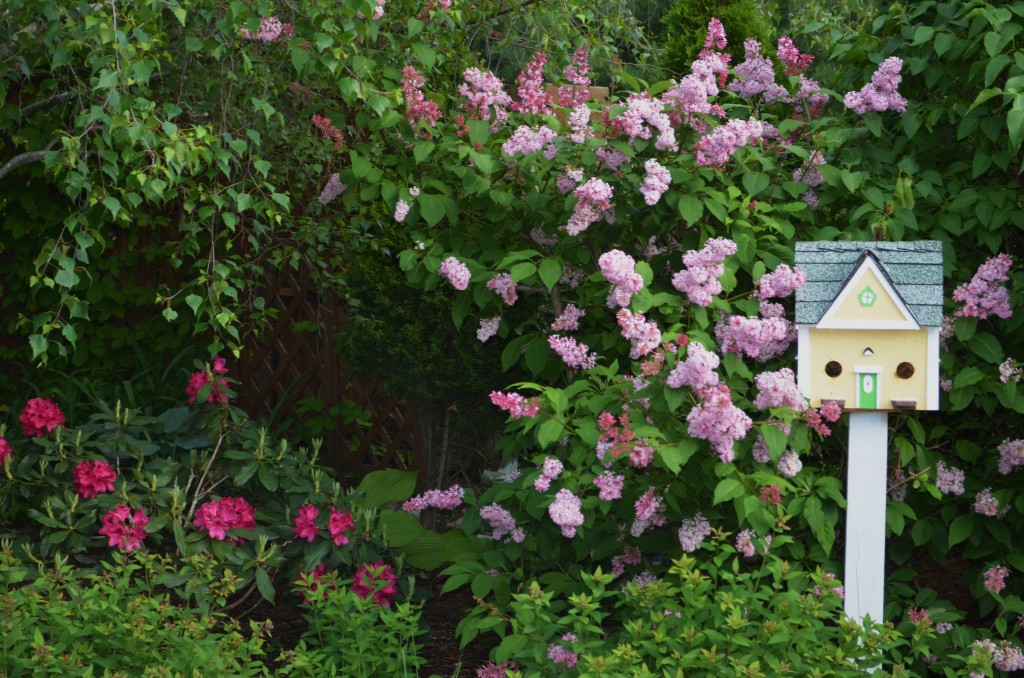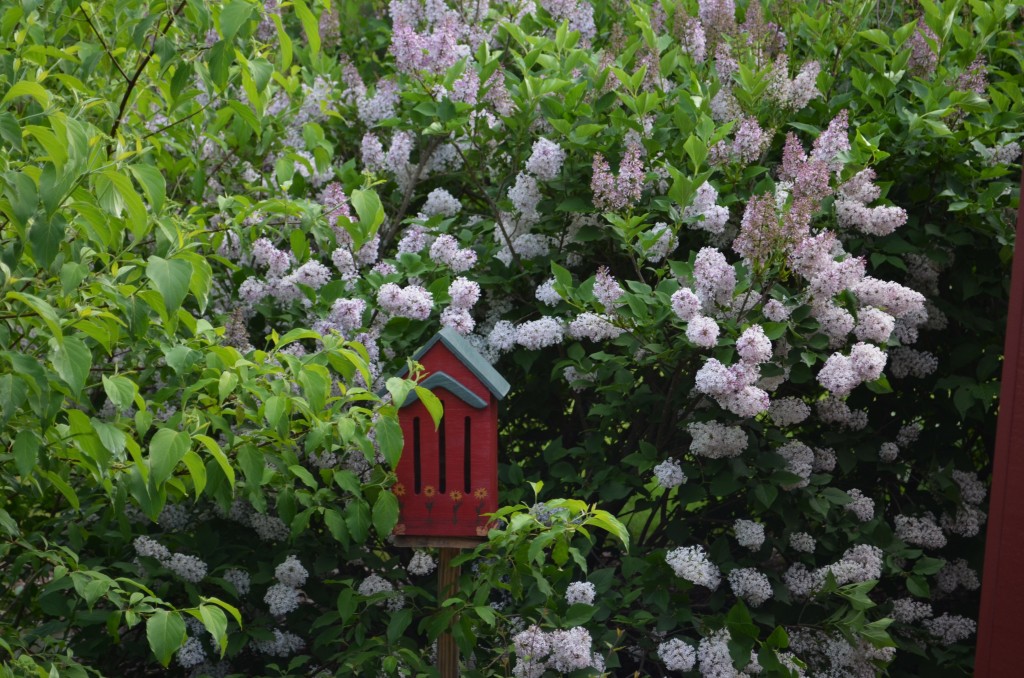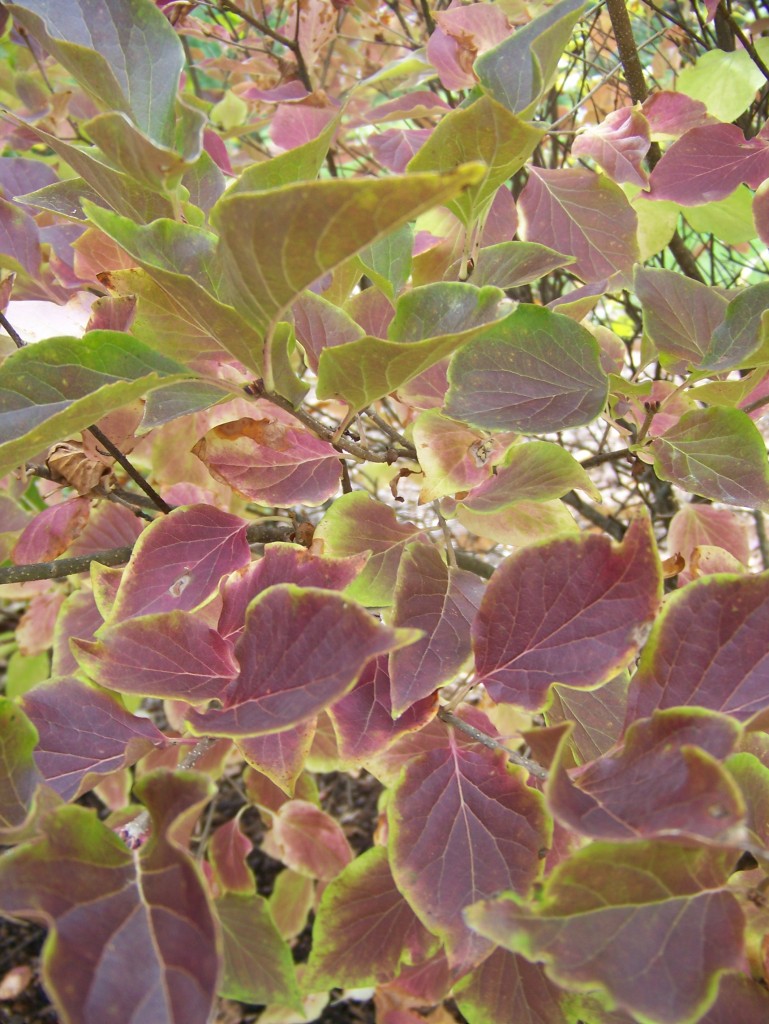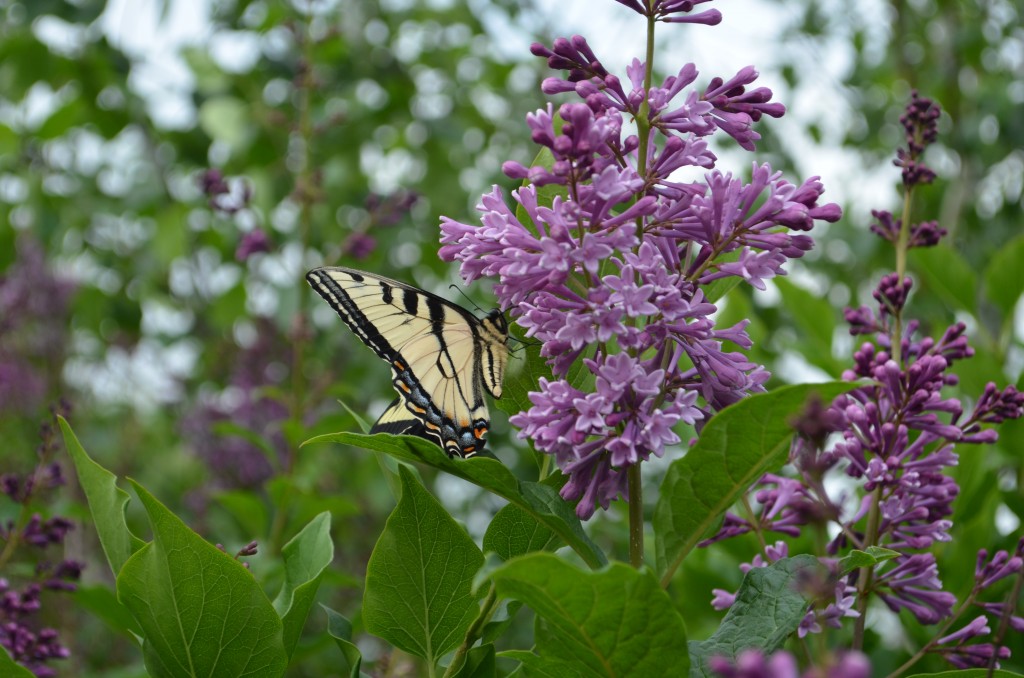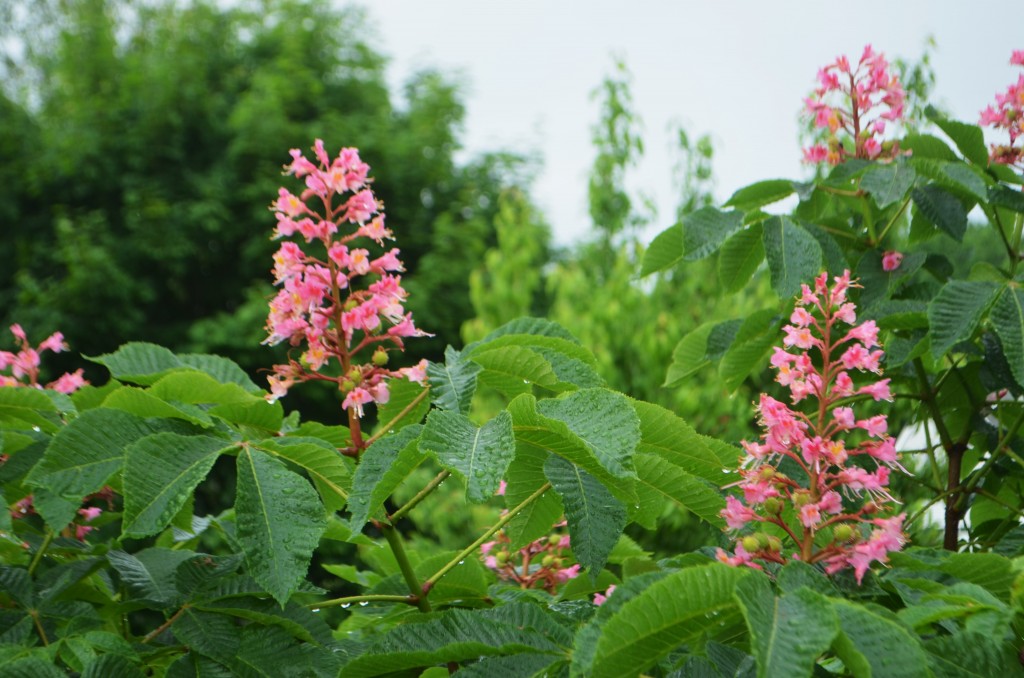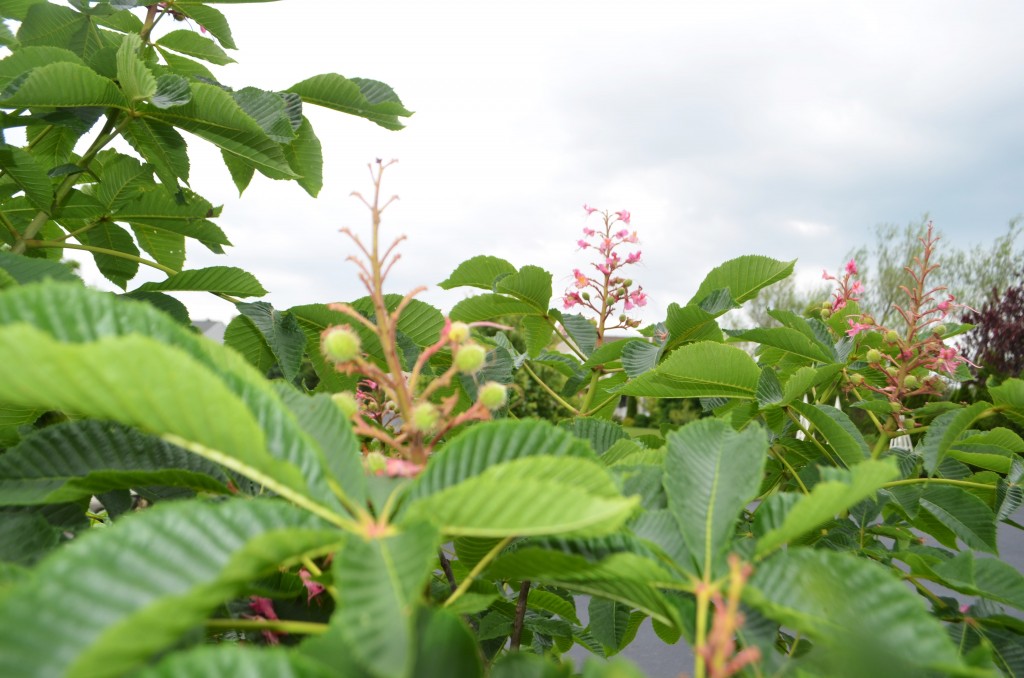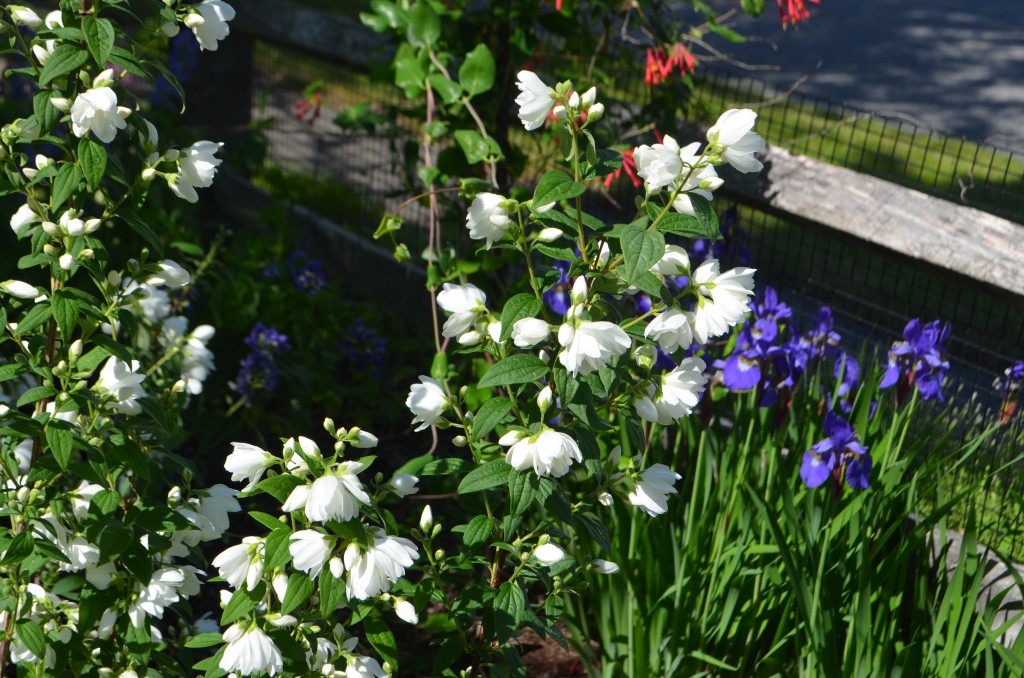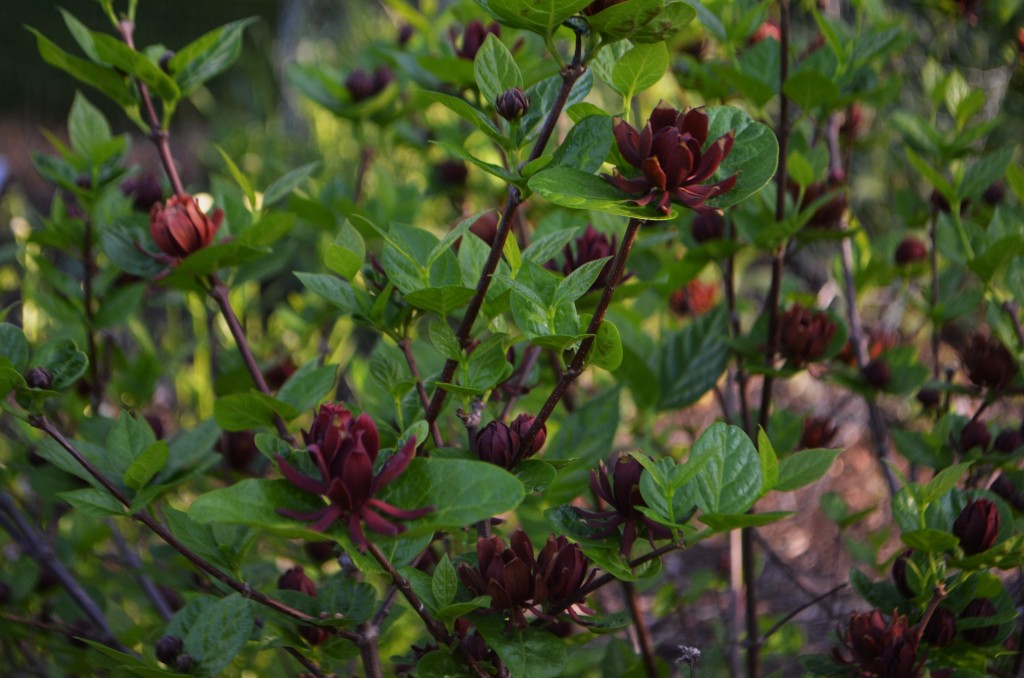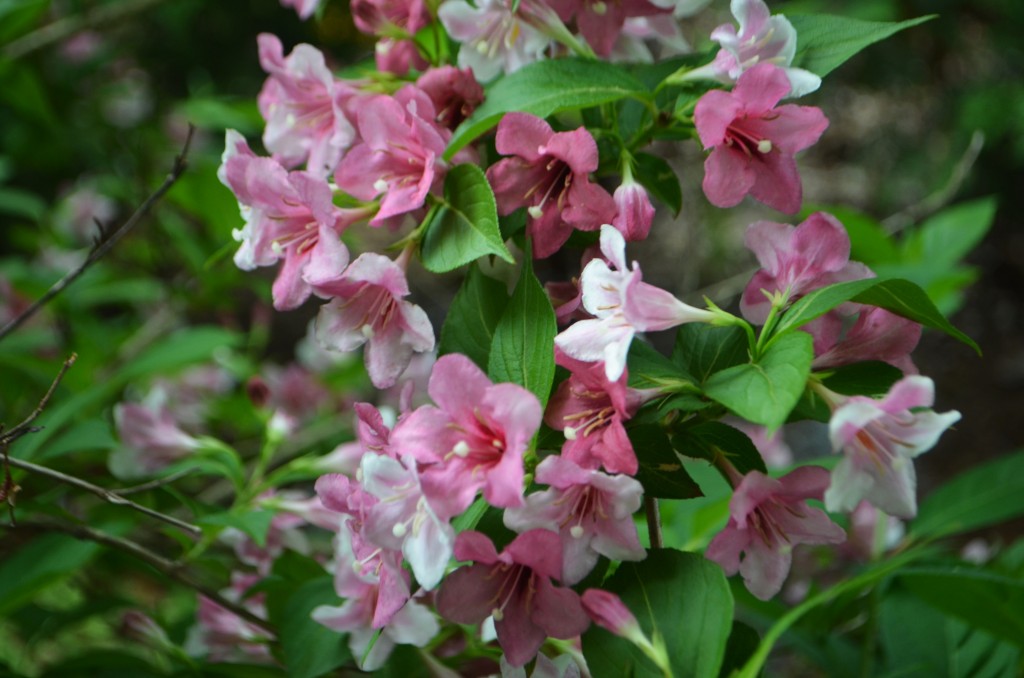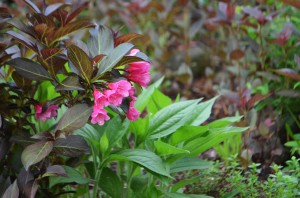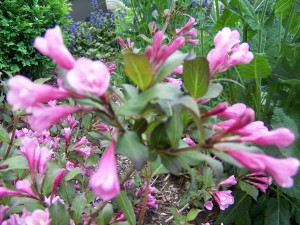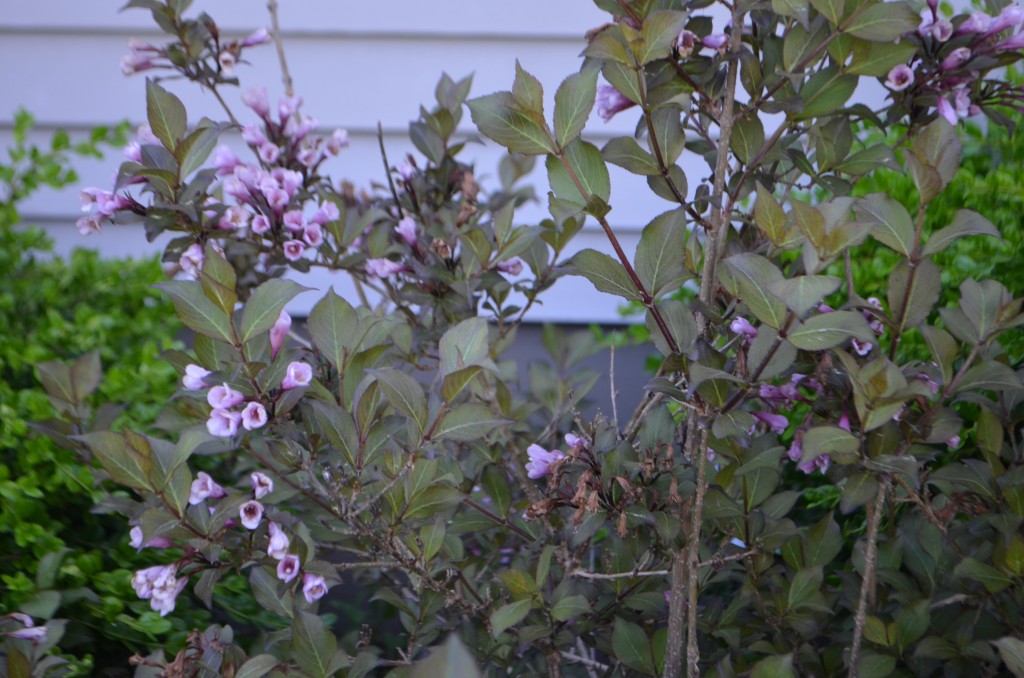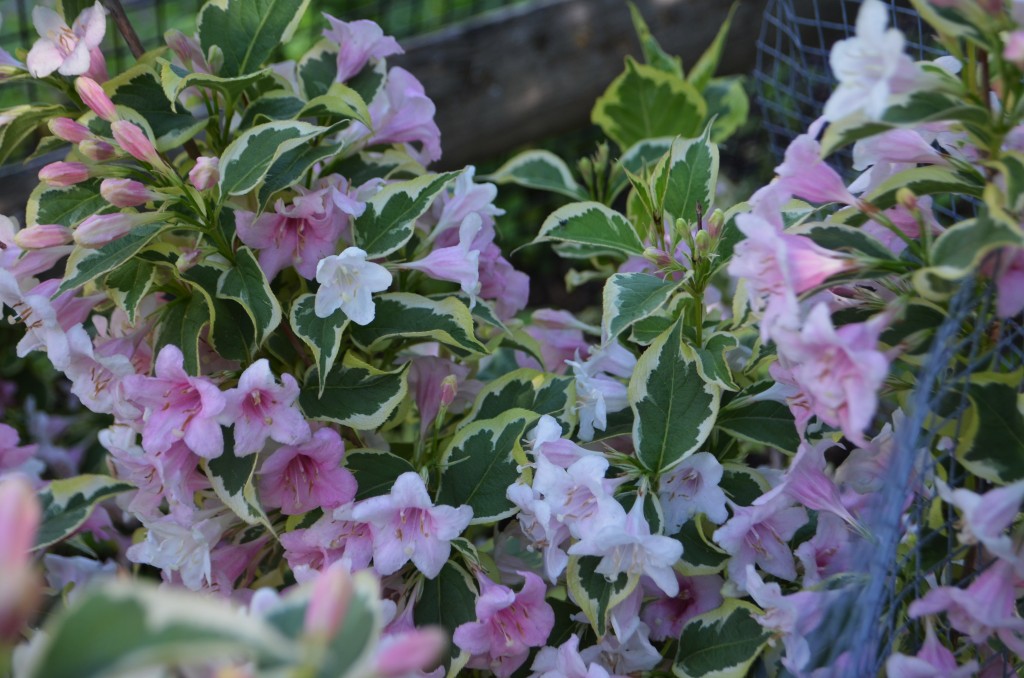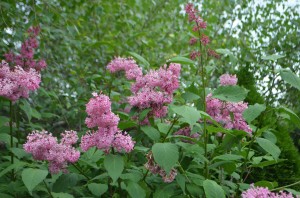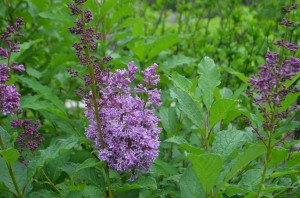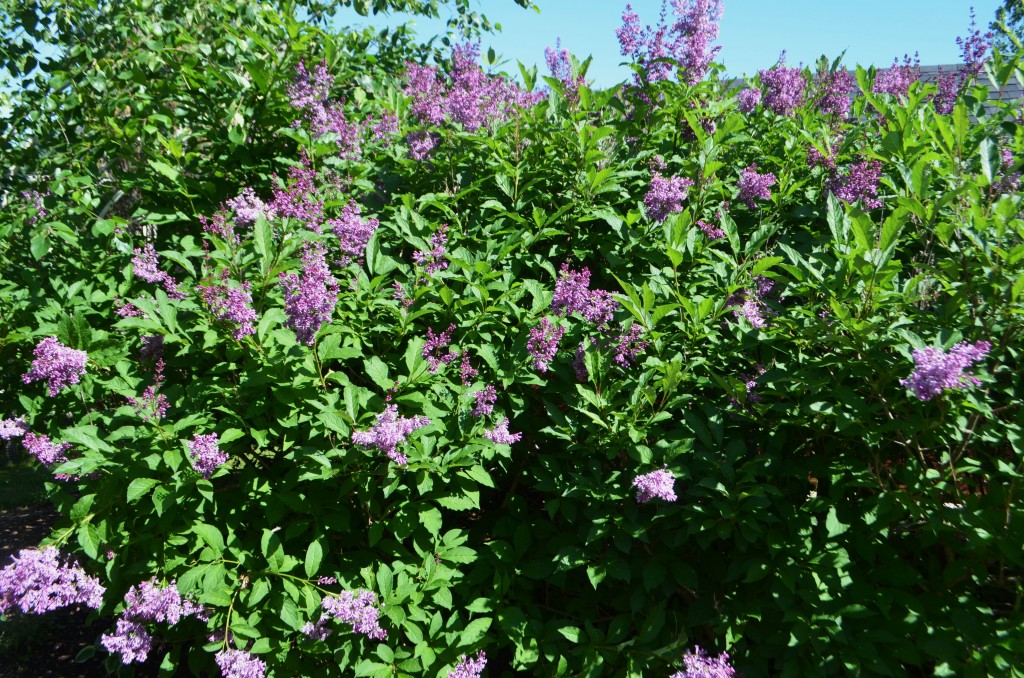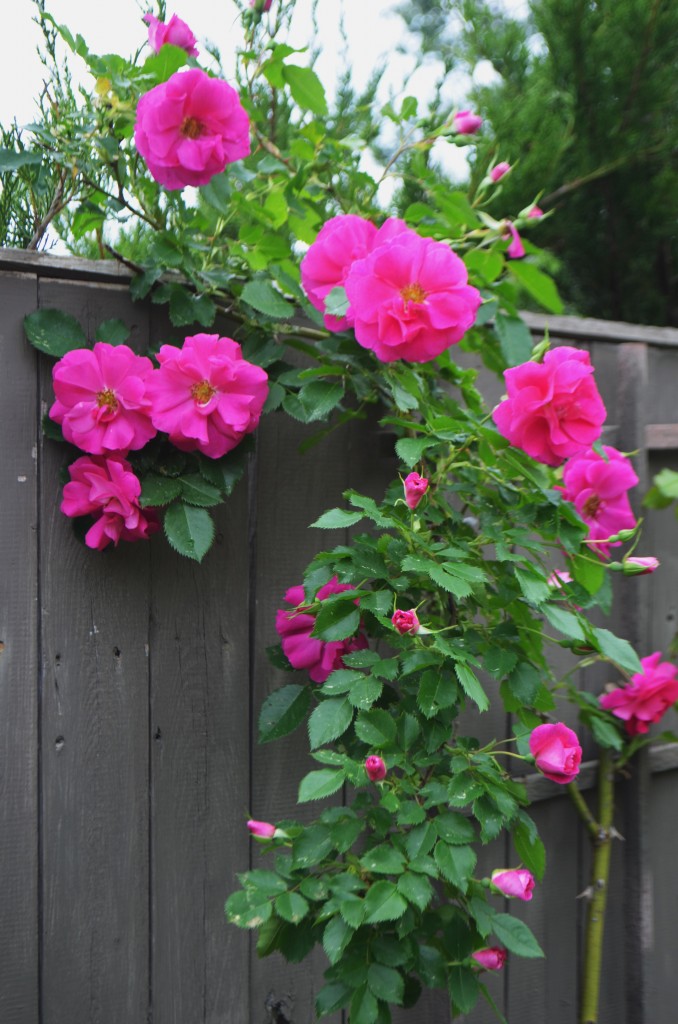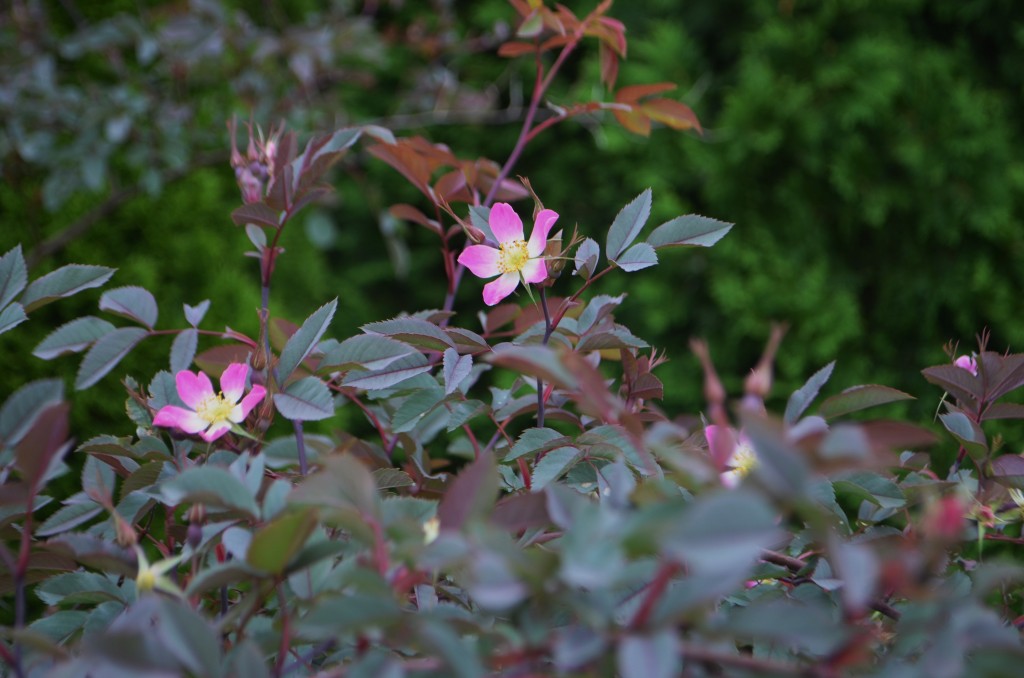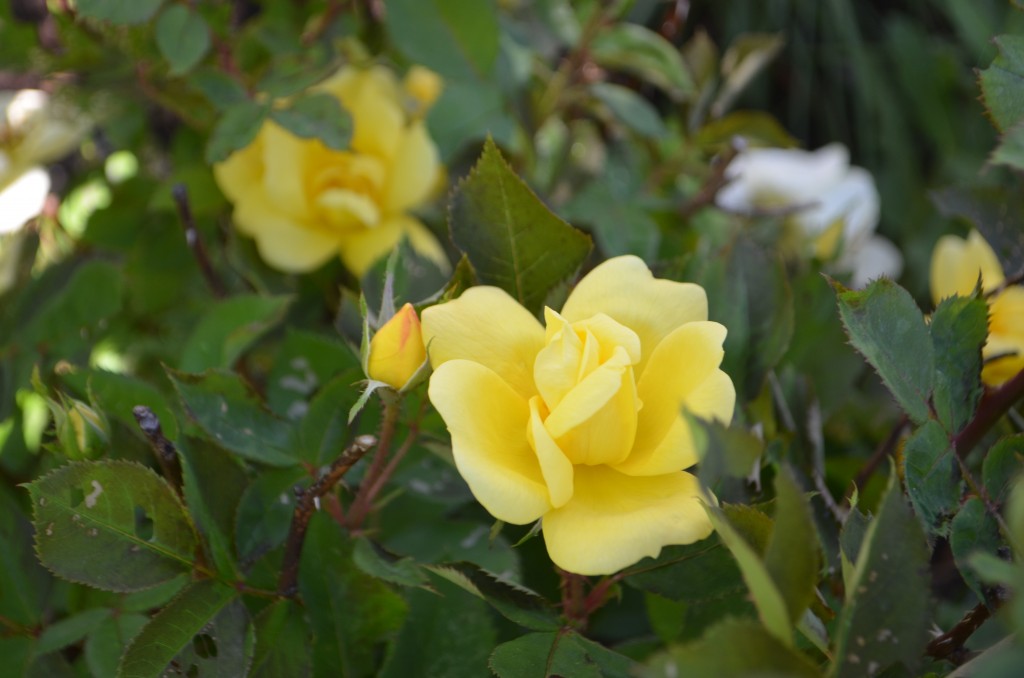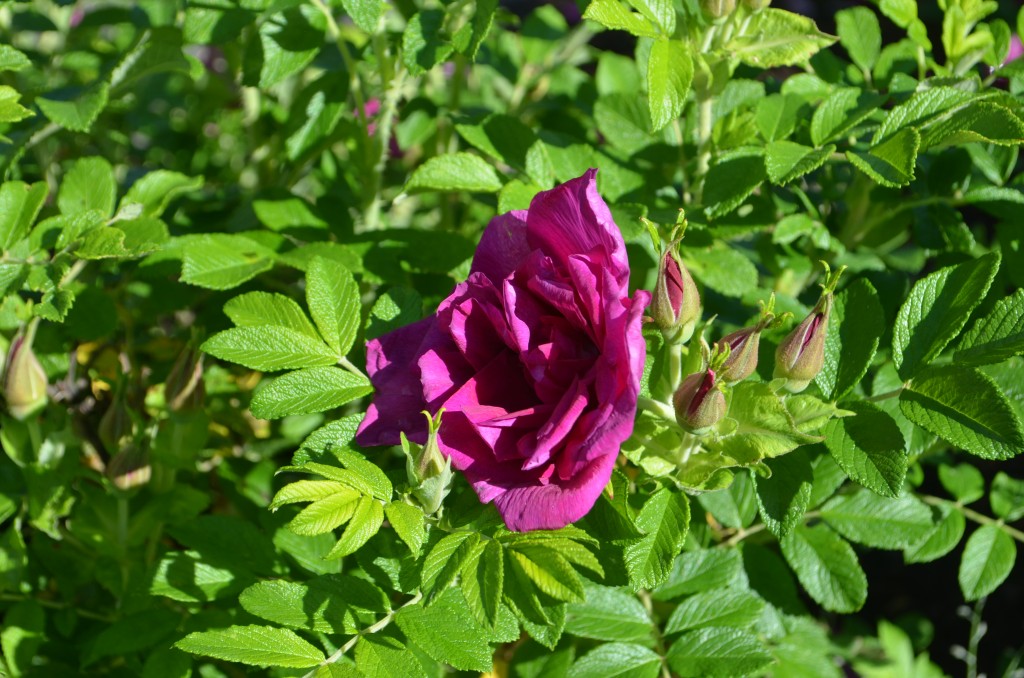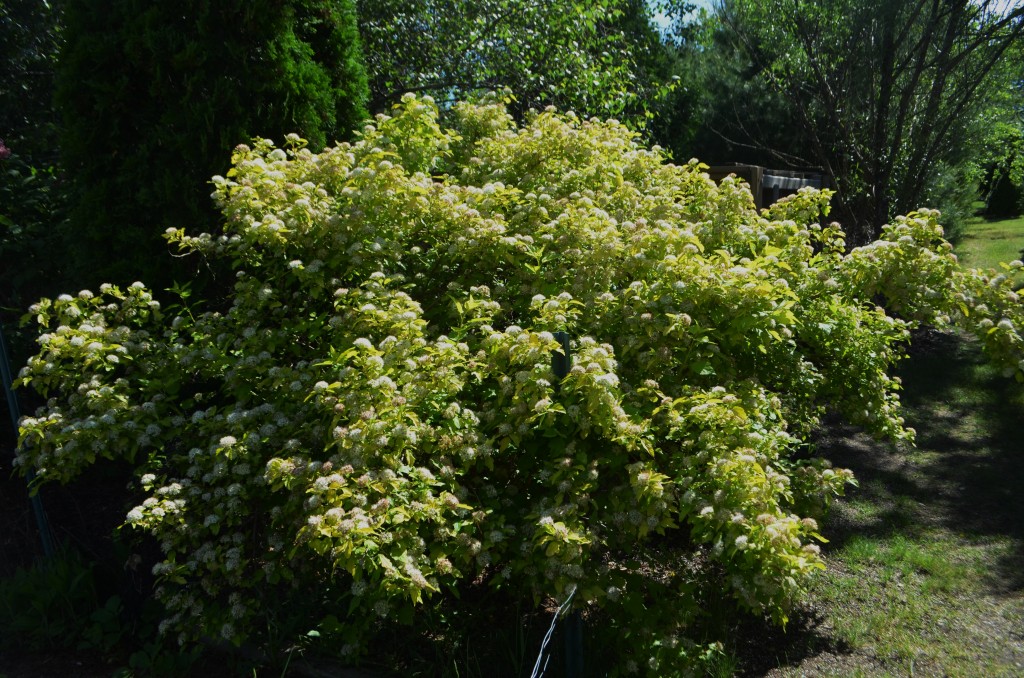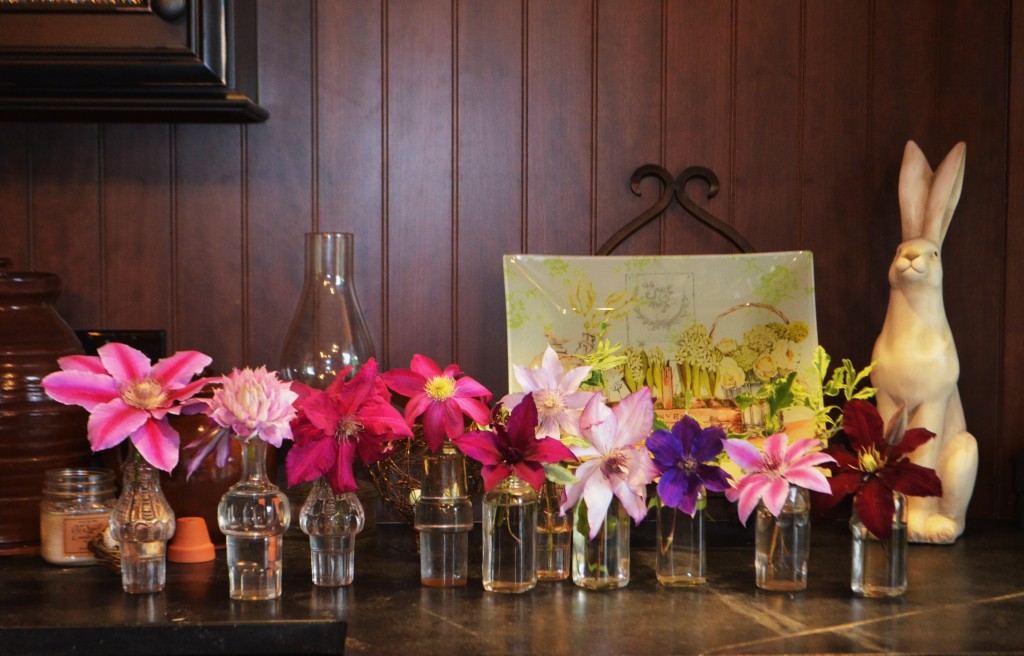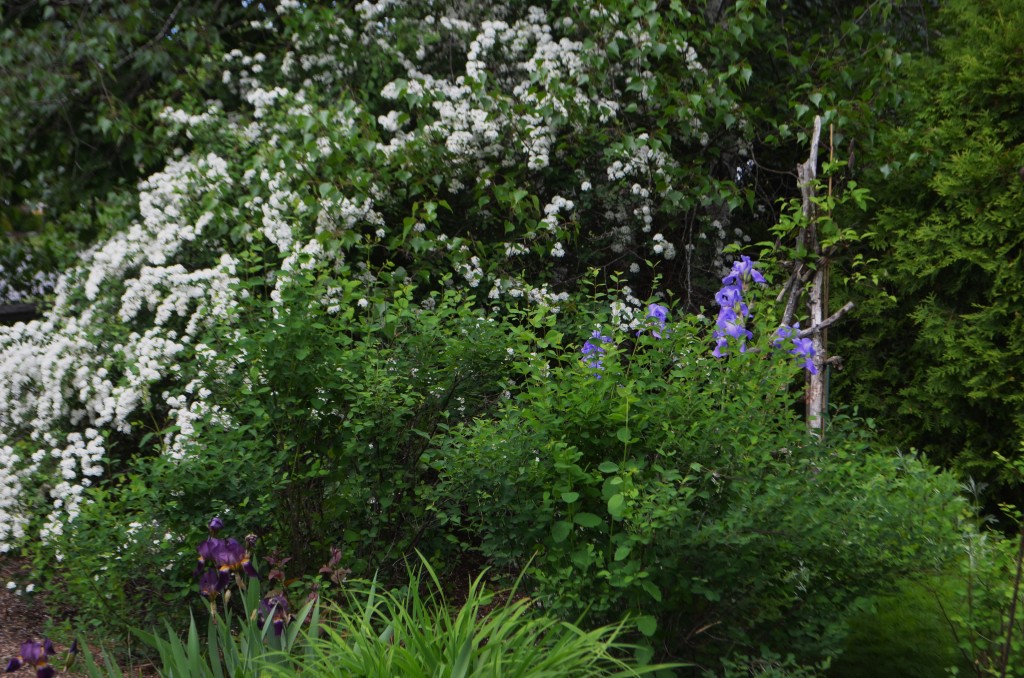 Saturday I had a lovely group of women here visiting from Milford, MA. On a garden tour when I am walking around with guests , I tend to point out plants that are great performers, answer questions about unusual things, and never miss an opportunity to tell a visitor when to stick their nose in a flower…after all fragrance is one of the great joys of growing them!
Saturday I had a lovely group of women here visiting from Milford, MA. On a garden tour when I am walking around with guests , I tend to point out plants that are great performers, answer questions about unusual things, and never miss an opportunity to tell a visitor when to stick their nose in a flower…after all fragrance is one of the great joys of growing them!
The two most fragrant things in the garden now are the calycanthus florida, or sweet shrub that spreads its wonderfully fruity scent all over the Dog’s Garden for almost the whole growing season ( I have chatted about it before, and can’t recommend enough that you purchase and plant one immediately) and my new favorite rose called ‘Kiss Me’ .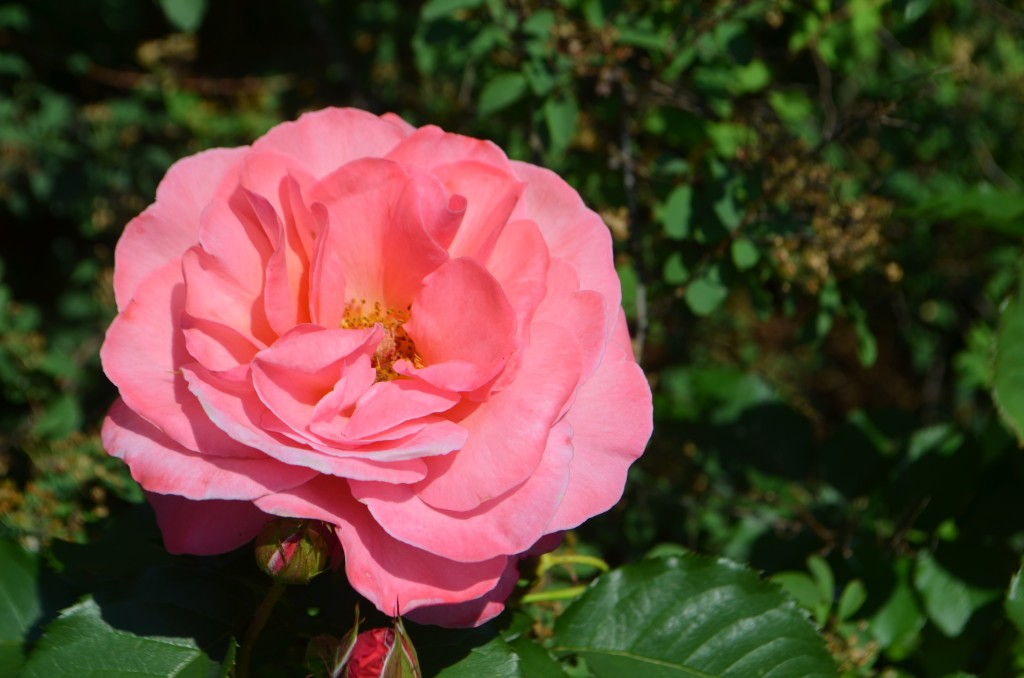
First off let me say how much I adore the name, Really love it. Find it charming and romantic. Want to say it over and over. Think Wil should be around when I do.
‘Kiss Me’ is a relatively new introduction from the Easy Elegance family of roses. They are bred to be long blooming , disease resistant, and grow on their on roots (not grafted).Those of you who have heard me talk on roses know I want it all…..disease resistant, water wise, fragrant,hardy, and lovely blooms…and don’t want to spray anything or fret about delicate specimens that succumb to every insect and pathogen east of the Mississippi. This rose meets all my criteria, and them some.
I will admit that in order to achieve my rose goals, I sometimes have to stop short on one or another of the criteria. Sometimes it is bloom size, or maybe fragrance. This rose does not require even the smallest of compromises.
Kiss Me is a beautiful color, one that appears peachy from a distance, but is actually more pink than peach up close . Kiss Me’s sturdy stems are just loaded with buds, and the fully opened flowers are about 4 inches across and have the romantic look of English Roses. The scent is sweet and slightly fruity, sort of like my other most favorite rose, David Austin’s ‘Christopher Marlowe’
So far the foliage looks glossy and untouched by the dreaded blackspot, and talk about vigorous! I ordered this rose from White Flower Farm and it came as a rose typically does, a few bare canes and roots. I placed it in a large container just temporarily until I found it a permanent home……3 months later it is still in the container and doing beautifully. An added benefit of my laziness is that the container lifts it up to perfect height for inhaling the delightful scent, no bending needed! I will plant it in the ground in the fall and keep my fingers crossed it does well over the winter,but my experience with Easy Elegance roses on the whole is that they do fine here and I am sure it will overwinter without a problem.